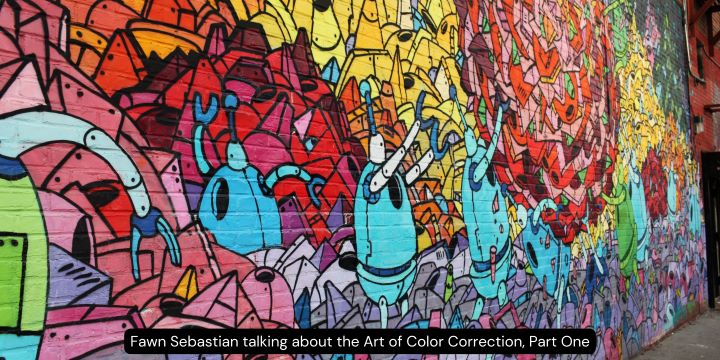Color correction is a vital aspect of visual storytelling, transforming raw footage into captivating narratives that resonate with audiences. In the first part of our exploration, we covered the basics of color correction, focusing on its importance and the foundational tools required. In this second part, we delve deeper into advanced techniques and insights, guided by the expertise of renowned colorist Fawn Sebastian. This article aims to provide a comprehensive understanding of color correction, enhancing your skills and appreciation for this intricate art form.
The Evolution of Color Correction
Understanding the history of color correction is essential to grasp its current practices. Initially, color correction was a painstaking manual process performed in chemical labs. With the advent of digital technology, it has transformed into a more accessible and creative endeavor. Digital color correction allows for greater precision and flexibility, enabling artists to manipulate hues, saturation, and luminance with unparalleled accuracy.
Fawn Sebastian’s Approach to Color Correction
Fawn Sebastian is a celebrated figure in the world of color correction, known for her innovative techniques and artistic vision. Her approach combines technical proficiency with a deep understanding of color theory. Sebastian emphasizes the psychological impact of colors, using them to evoke specific emotions and enhance the narrative.
The Role of Color Grading
Color grading is a crucial component of Sebastian’s workflow. It involves adjusting the color balance of footage to create a consistent look and feel. According to Sebastian, color grading goes beyond correcting footage; it is about crafting a visual language that supports the story. By manipulating shadows, midtones, and highlights, she creates a cohesive atmosphere that draws viewers into the narrative.
Tools and Techniques
Sebastian’s toolkit includes industry-standard software like DaVinci Resolve and Adobe Premiere Pro. She highlights the importance of understanding these tools’ capabilities to fully exploit their potential. Key techniques she employs include:
- Primary Color Correction: Adjusting the overall balance of colors in a shot.
- Secondary Color Correction: Targeting specific colors to alter or enhance them.
- Curves and Levels: Fine-tuning the luminance and contrast to achieve the desired look.
The Artistic Dimension of Color Correction
Color correction is not merely a technical task; it is an art form. Fawn Sebastian likens it to painting, where the screen is the canvas, and the colors are the paints. Each project requires a unique approach, tailored to its thematic and aesthetic needs.
Storytelling Through Color
One of the most profound insights from Sebastian’s work is the use of color to reinforce storytelling. For example, she uses cool tones to convey a sense of calm or detachment, while warm tones can evoke warmth and intimacy. This deliberate use of color enhances the emotional impact of a scene, making the narrative more compelling.
Case Studies
Sebastian’s portfolio includes a range of projects, each showcasing her adept use of color correction to support storytelling. In a recent film, she utilized a desaturated palette to emphasize the bleakness of the setting, while in another, vibrant colors highlighted the protagonist’s journey of self-discovery.
Advanced Techniques and Tips
For those looking to elevate their color correction skills, Fawn Sebastian offers several advanced techniques:
- Match Grading: Ensuring consistency across different shots and scenes to maintain visual coherence.
- Skin Tone Correction: Paying special attention to skin tones to make them look natural and flattering.
- LUTs (Look-Up Tables): Using pre-defined color profiles to achieve specific looks efficiently.
Sebastian also stresses the importance of continual learning and experimentation. The field of color correction is ever-evolving, with new tools and techniques emerging regularly. Staying updated and experimenting with different approaches can lead to innovative solutions and a more refined artistic style.
Conclusion
Color correction is an essential skill for any visual storyteller. Under the guidance of experts like Fawn Sebastian, one can appreciate its depth and complexity. By mastering both the technical and artistic aspects of color correction, filmmakers and editors can significantly enhance their work, creating visually stunning and emotionally resonant stories.
At Reels and Reams Media, we recognize the value of expert insights like those shared by Fawn Sebastian. For more tips and professional guidance, stay tuned to our blog and explore our resources to elevate your storytelling craft.



